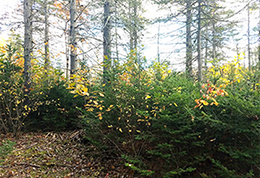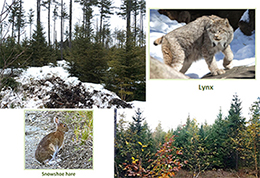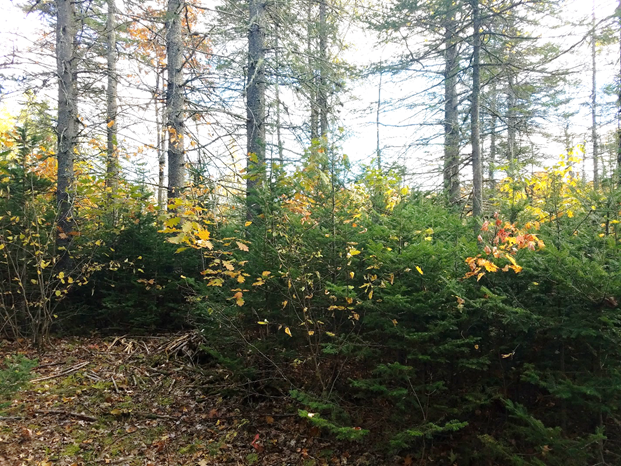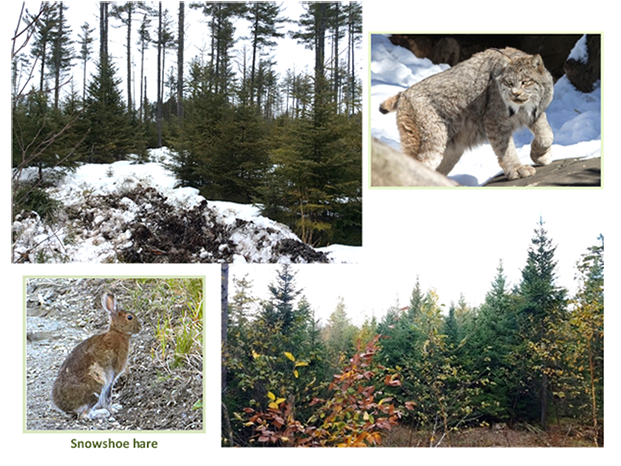DACF Home → Bureaus & Programs → Maine Forest Service → Projects → What will my woods look like? → Overstory Removal: Spruce stand
Overstory Removal
Site: Spruce stand

Woodland Owners’ View
There are a lot of red spruce and other species under the bigger trees. They probably came in after cutting some of the bigger trees in the past. Since the tall trees are ready to be cut and sent to a mill, and there are a lot of saplings underneath, it’s time to take the top off.
Logger’s View
This would be a tough one for a man with a chainsaw. Luckily, mechanized equipment is built for this sort of work.
Forester’s View
There is a well-established understory of advanced regeneration, mostly red spruce, probably started after a previous partial harvest. Since the overstory trees are at or near financial maturity, recommend removing the overstory to fully release the next age class.

Woodland Owners’ View
Still a lot of little trees crowded in there so it would be difficult to walk through the area easily. The forest owner could take out some of the little trees so that the remaining trees will grow faster. In the long term, nature will do it eventually.
Forester’s View
Though there was some inevitable damage to understory trees during the logging operation, there are still more than enough stems to fully occupy the site. Perhaps this landowner will pay for some non-commercial thinning, to improve growth of the next stand. Natural competition will eventually do the same thing, but it will take a lot longer.
Wildlife Outcome
Mourning warblers like to nest near the ground in dense vegetation. Snowshoe hare also like this low cover, which means that lynx and other cats may also be in the vicinity.
Equipment Used
Feller buncher and grapple skidders.
Location:
Frye Mountain Wildlife Management Area, Montville and Knox
Maine Department of Inland Fisheries & Wildlife, Lands Management Program, Sidney
Ryan Robicheau, Wildlife Management Section Supervisor
Ryan.robicheau@maine.gov

